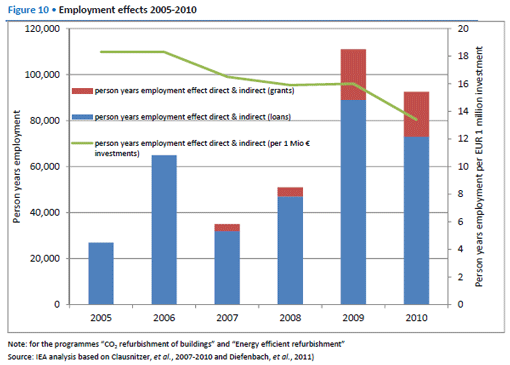IEA har tittat närmare på hur man på olika sätt kan få mera fart på effektiviseringen i byggnader och redovisar erfarenheter från ett antal olika länder där man jobbat med olika sätt att finansiera och motivera med ekonomiska instrument:
.....clustered into four categories, each of which has specific advantages in some contexts:
Fiscal instruments:
o taxes
o tax reliefs
Financial measures:
o loans
o grants
Trading schemes:
o emissions trading schemes
o white certificates
Direct investment:
o public procurement
o public investment in R&D
o investment in public infrastructure.
Det tyska exemplet och dess effekter på sysselsättningen är kul. Man redovisar (se bild nedan) 14-19 jobb per investerad million Euro (motsvarande 1,6-2,2 jobb per million SEK).

Skrivet av Hans Nilsson, 2013-10-21.
(0) Kommentarer • Permalink
